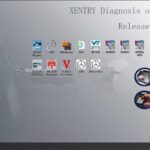The OBD2 port on your Freightliner truck is a critical component for diagnosing engine problems and ensuring your vehicle runs smoothly. This guide provides a detailed overview of OBD (On-Board Diagnostics) systems, readiness criteria, and information specific to locating the OBD2 port in your Freightliner.
Understanding Freightliner OBD Systems and Readiness Criteria
On-Board Diagnostic (OBD) systems in Freightliner trucks, like in most modern vehicles, continuously monitor emission-related components. If a problem is detected, the system illuminates a warning light on the dashboard and stores diagnostic trouble codes (DTCs) to aid in troubleshooting.
Current OBD Readiness Criteria
Currently, Freightliner trucks need at least five (5) warm-up cycles (WUC) since codes were last cleared for the OBD system to be considered “ready.”
Future OBD Readiness Criteria (May 2025)
More stringent criteria will be implemented in May 2025. For vehicles without permanent diagnostic trouble codes (PDTCs):
- At least five (5) WUC since codes were cleared, or
- At least 100 miles traveled since codes were cleared, or
- At least 200 minutes of engine run time since codes were cleared, or
- At most two (2) incomplete OBD monitors.
For vehicles with at least one PDTC:
- At least 15 WUC since codes were cleared, or
- At least 300 miles traveled since codes were cleared, or
- At least 600 minutes of engine run time since codes were cleared, or
- At most one (1) incomplete OBD monitor.
Failing to meet these criteria will result in a “Not Ready” OBD test result, potentially impacting emissions compliance. Continued operation under normal driving conditions for a few days followed by retesting is usually the solution.
Warm-Up Cycles, PDTCs, and the Freightliner OBD2 Port Location
Understanding key terms related to OBD systems is crucial for proper diagnostics.
What is a Warm-Up Cycle (WUC)?
A warm-up cycle involves driving the vehicle until the engine coolant temperature rises by at least 40 degrees Fahrenheit after starting and reaches a minimum of 140 degrees Fahrenheit for diesel engines (160 degrees for natural gas engines).
What are Permanent Diagnostic Trouble Codes (PDTCs)?
PDTCs differ from regular DTCs in that they cannot be cleared by disconnecting the battery or using a scan tool. Resolving the underlying issue that triggered the PDTC, followed by sufficient drive time for the relevant monitor to re-run without detecting a problem, is the only way to clear a PDTC.
Where to Find the OBD2 Port on a Freightliner
The OBD2 port on a Freightliner is typically located under the dashboard on the driver’s side, often near the steering column or the fuse panel. It’s a standardized 16-pin trapezoidal connector. In some Freightliner models, it might be behind a small access panel. Consult your owner’s manual for the precise location in your specific Freightliner model.
Conclusion
The Freightliner Obd2 Port is essential for diagnosing and resolving engine issues, contributing to efficient vehicle operation and emissions compliance. Understanding OBD readiness criteria, warm-up cycles, and PDTCs is vital for ensuring your Freightliner passes emissions tests and remains in optimal working condition. If you’re unable to locate the OBD2 port, always refer to your owner’s manual or consult a qualified Freightliner technician.
